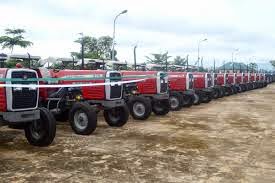Cassava Production and Processing Business
Cassava is the most important tropical crop, providing dietary energy for
over 900 million people in 105 countries. It is developing world’s fourth most
important crop. It is known to be the highest producer of carbohydrate among
all the staple crops. Nigeria is the largest producer of cassava in the world,
producing 19% of the total world production. Cassava has over 100 derivatives.
The major products from cassava are: cassava starch; cassava Chips, Ethanol;
Sweetener/High Fructose Syrup; High Quality Cassava Flour; wet and dry Fufu;
Gari e.t.c.
Cost of Cultivation of Cassava per Ha
1. Land Preparation
i. Ploughing
ii. Harrowing N30,000.00
iii. Ridging
2. 60 Bundles of
Cassava Stem = N24,000.00
3. Labour for
Planting = N12,000.00
4. Herbicides and
Application = N12,000.00
5. Fertilizer &
Application
= N30,000.00
6. Weeding and Maintenance
= N20,000.00
7. Harvesting and Delivery
= N30,000.00
Total
= N158,
000.00
NOTE:
1. Additional
cost may apply if double ploughing is required.
2. There may be
no ridging if mechanical planter is used.
3. The estimate
stated above should deliver 22 MT of cassava roots. That means it requires N7,
180. 00 to produce a ton of Cassava root apart from miscellaneous expenses and
profit of the farmer.
4. The cost of harvesting and delivery is
negotiable.
Cost of Producing High Quality Cassava Flour,
(HQCF) per tonne
Cassava
4 Tonnes-------------N40,000.00
Cassava
Peeling --------------N4,000.00
Cassava Washing-----------------N1,000.00
Cassava
Grating--------------------N1,000.00
Processing/Dewatering----------N1,000.00
Pulverising---------------------------N1,000.00
Frying-Workmanship--------------N2,000.00
Diesel
Fryers-------------------------N6,975.00
Sieving--------------------------------N1,500.00
Packaging----------------------------N2,000.00
Diesel
Generator------------------N6,200.00
TOTAL N76,675.00
Note:
Change in total Cost may apply due to differences in cost of fuel, tubers,
transportation and labour in various locations.
Step by Step process of making Gari
1. Harvesting
3.
Washing
4. Grating
4. Grating
5.
Pressing/Fermentation
6.
Pulverizing
7.
Frying
8.
sieving
9.
Bagging/labelling
Note: Getting the
right moisture content is important.
Step by Step process of making Fufu
1.
Harvesting
2.
Peeling
3.
Washing
4.
Soaking/
3 days/ change water daily to reduce odour
5.
Pulping
and Sieving
6.
Allow
to settle and drain with Muslim cloth
7.
Packaging
or drying for power Fufu.
Step by Step process of making Chips
1.
Harvesting
2.
Peeling
(not necessary for ethanol)
3.
Washing
4.
Chipping
or Flaking
5.
Drying,
(Mechanical or use of raised platform).
6.
Packaging
Note: Getting the
right moisture content is important.
Crop Production
.jpg)
- Cassava
- Rice
- Horticulture/Vegetables Maize
- Sorghum/ Millet
- Cotton
- Oil Palm
- Cocoa
- E.t.c
Livestock Production
- Poultry
- Piggery
- Cattle
- Grass cutter
- Snailry
Fisheries and Aquaculture
- Fish Culture, (fry, fingerings & Juveniles)
- Artisanal Fishing
- Fish Feed production
Agro Processing
- Gari
- Cassava Starch
- Fish smoking
- Milk Processing
- HQCF
- Odorless Fufu
- Pepper
Other Opportunities
- Seed/Stem multiplication
- Inputs Sales
- Tractor Hiring Services
- Seedlings Production
- Bee Keeping & Honey Production
- Marketing
- Storage and Collection
- Micro/Macro Credit Services
- Mobile Grating & Drying services
- Packaging Materials


.jpg)
.jpg)
.jpg)

.jpg)


.jpg)
.jpg)
How can we explore the benefits in Agriculture
ReplyDelete